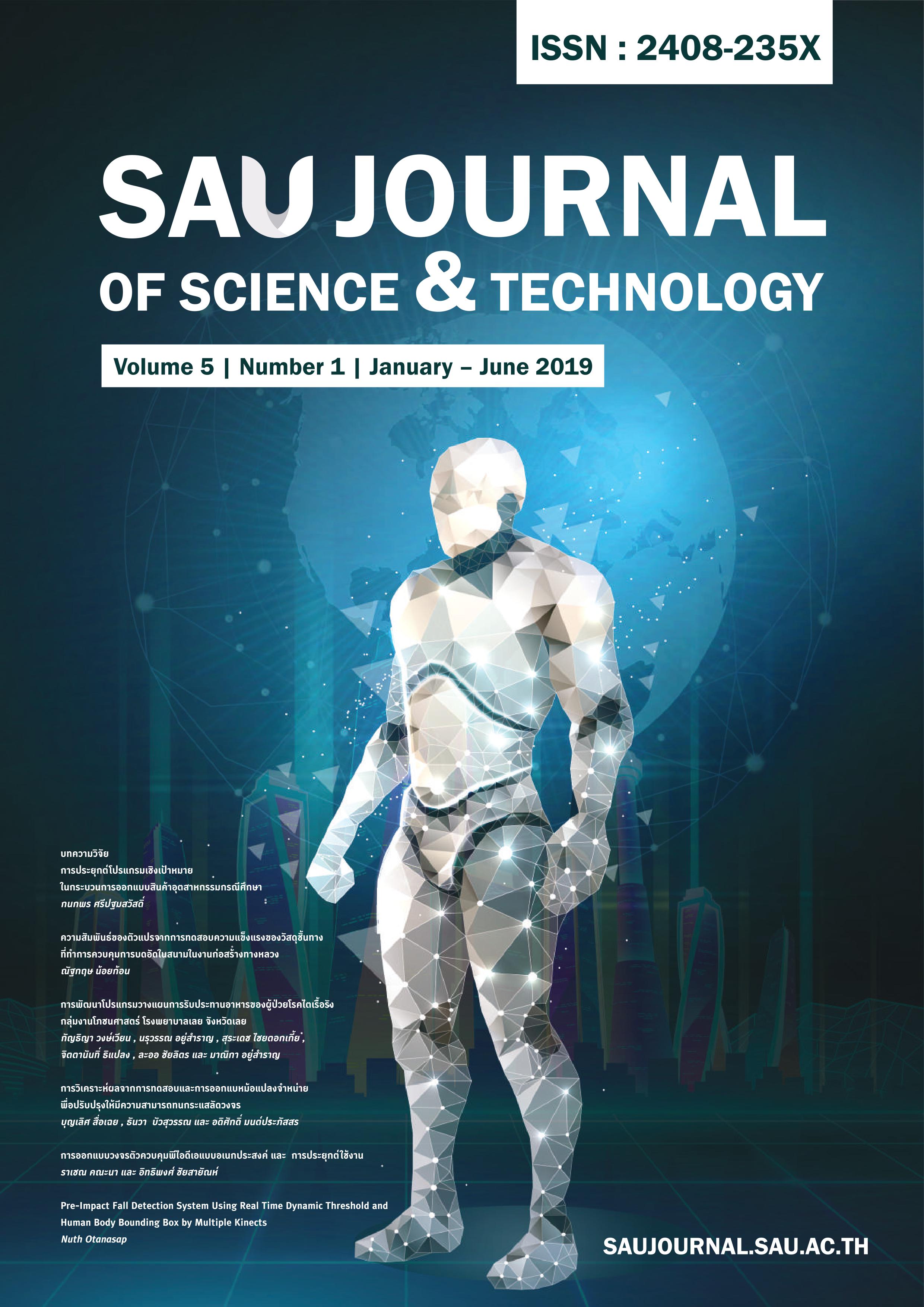Pre-Impact Fall Detection System Using Real Time Dynamic Threshold and Human Body Bounding Box by Multiple Kinects
Main Article Content
Abstract
This work contributes on the fusion of multiple Kinect based skeletons, based on dynamic threshold and bounding box posture analysis which is the only research work reported so far. As the second leading cause of accidental death extensive is unintentional falls, which is a vital cause of personal harm, particularly with the venerable. Accordingly, many studies in healthcare are achieving on the improvement of the pre-fall detection system to secure the protection of those who are possible to be concerned. Pre-impact fall detection system has to overcome many difficulties to improve an effective system. Some of the particular difficulties are obtrusion, occlusion, and overlap in the vision-based method.
In this research, the purpose of adopting the bounding box and head velocity method compare with a real-time dynamic threshold is for analyzing the fall and non-fall incident accurately. Furthermore, the skeleton joint position provided by multiple Kinect viewpoints are utilized for the reason of resolving in obtrusion, occlusion, and overlap issues without demanding of markers. Though, the various fuzzy rule base methods also are applied for the final decision of lead time detection and triggering fall alarm. The demonstration of subjects completion is performed 1,100 actions were included 700 times for activities of daily living and 400 times for falling. All activities performed by ten different volunteers, seven healthy young males, and three healthy young females.
The results have shown that 98.55% of the proposed method is higher accurately detected. However, the proposed method provided the lowest specificity at 97.71%, vice versa it offered the highest sensitivity at 100.00%. It implies that during system provided higher accuracy and sensitivity in pre-impact fall detection, the recognized precision of normal activities will be reduced. Moreover, the multiple Kinect methods not only provide higher accuracy and sensitivity but also offer higher average lead-time as 505.86 ms.
Article Details
References
Abbate, S., Avvenuti, M., Bonatesta, F., Cola, G., Corsini, P., & Vecchio, A. (2012). A smartphone-based fall detection system. Pervasive and Mobile Computing, 8(6), 883-899.
Aggarwal, J. K., & Ryoo, M. S. (2011). Human activity analysis: A review. ACM Computing Surveys (CSUR), 43(3), 16.
Bagalà, F., Becker, C., Cappello, A., Chiari, L., Aminian, K., Hausdorff, J. M., ... and Klenk, J. (2012). Evaluation of accelerometer-based fall detection algorithms on real-world falls. PloS one, 7(5), e37062.
Bourke, A. K., O’brien, J. V., & Lyons, G. M. (2007). Evaluation of a threshold-based tri-axial accelerometer fall detection algorithm. Gait & posture, 26(2), 194-199.
Caon, M., Yue, Y., Tscherrig, J., Mugellini, E., & Khaled, O. A. (2011, October). Context-aware 3d gesture interaction based on multiple kinects. In Proceedings of the first international conference on ambient computing, applications, services and technologies, AMBIENT (pp. 7-12).
Dimou, A., Nemethova, O., & Rupp, M. (2005). Scene change detection for H. 264 using dynamic threshold techniques. na.
Huang, J., Di, P., Wakita, K., Fukuda, T., & Sekiyama, K. (2008, November). Study of fall detection using intelligent cane based on sensor fusion. In 2008 International Symposium on Micro-NanoMechatronics and Human Science (pp. 495-500). IEEE.
Kwolek, B., & Kepski, M. (2016). Fuzzy inference-based fall detection using kinect and body-worn accelerometer. Applied Soft Computing, 40, 305-318.
Li, S., Pathirana, P. N., & Caelli, T. (2014, August). Multi-kinect skeleton fusion for physical rehabilitation monitoring. In 2014 36th annual international conference of the ieee engineering in medicine and biology society (pp. 5060-5063). IEEE.
Madhubala, J. S., & Umamakeswari, A. (2015). A Vision based Fall Detection System for Elderly People. Indian Journal of Science and Technology, 8(S9), 172-180.
Mastorakis, G., & Makris, D. (2014). Fall detection system using Kinect’s infrared sensor. Journal of Real-Time Image Processing, 9(4), 635-646.
Otanasap, N., & Boonbrahm, P. (2013, October). Survey of fall detection techniques based on computer vision. In the Proceeding of The Second Asian Conference On Information Systems (pp. 351-355) THA
Otanasap, N., & Boonbrahm, P. (2013, October). Survey of fall detection techniques based on computer vision. In the Proceedings of Asian Conference on Information Systems 2013 (pp. 351-355)
Otanasap, N., & Boonbrahm, P. (2017, February). Pre-impact fall detection system using dynamic threshold and 3D bounding box. In Eighth International Conference on Graphic and Image Processing (ICGIP 2016) (Vol. 10225, p. 102250D). International Society for Optics and Photonics.
Rougier, C., Meunier, J., St-Arnaud, A., & Rousseau, J. (2006, August). Monocular 3D head tracking to detect falls of elderly people. In 2006 International Conference of the IEEE Engineering in Medicine and Biology Society (pp. 6384-6387). IEEE.
Stone, E. E., & Skubic, M. (2014). Fall detection in homes of older adults using the Microsoft Kinect. IEEE journal of biomedical and health informatics, 19(1), 290-301.
Tolkiehn, M., Atallah, L., Lo, B., & Yang, G. Z. (2011, August). Direction sensitive fall detection using a triaxial accelerometer and a barometric pressure sensor. In 2011 Annual International Conference of the IEEE Engineering in Medicine and Biology Society (pp. 369-372). IEEE.
World Health Organization. (2012). Good health adds life to years. Global brief for World Health Day 2012. Geneva, Switzerland: World Health Organization. Accessed July, 1, 2012.
Wu, G. (2000). Distinguishing fall activities from normal activities by velocity characteristics. Journal of biomechanics, 33(11), 1497-1500.
Yang, M. T., & Chuang, M. W. (2013). Fall risk assessment and early-warning for toddler behaviors at home. Sensors, 13(12), 16985-17005.
Youm, S., & Kim, W. (2003, July). Dynamic threshold method for scene change detection. In Multimedia and Expo, 2003. ICME'03. Proceedings. 2003 International Conference on (Vol. 2, pp. II-337). IEEE.
Zadeh, L. A. (1976). A fuzzy-algorithmic approach to the definition of complex or imprecise concepts. International Journal of Man-machine studies, 8(3), 249-291.


